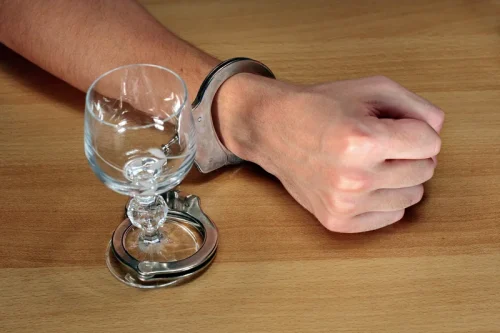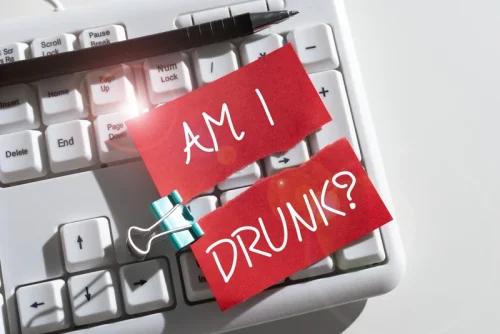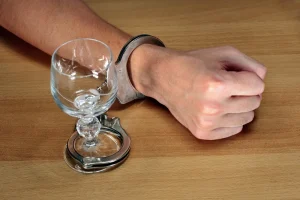
For some, this was about “listening to myself,” “considering my needs,” and “staying close to myself.” For others, it concerned learning about and accepting certain vulnerabilities, or adopting a non-user identity. She continued to search for help and was eventually diagnosed with autism. https://ecosoberhouse.com/article/cannabinoid-hyperemesis-syndrome-what-is-chs/ She learned that she was self-medicating to dampen the excessive stimuli she experienced due to autism. This helped her to develop other strategies to dampen stimuli, which reduced her craving for drugs and helped her to gradually feel better.
Office of Addiction Services and Supports
Experts believe that tackling the emotional residue of addiction—the guilt and shame—is fundamental to building a healthy life. It’s not possible to undo the damage that was done, but it is possible to build new sources of self-respect by acknowledging past harms, repairing relationships, and maintaining the commitment to recovery. Not only is addiction relapse common, relapse is not considered a sign of failure.

Addiction Treatment Options for Drugs and Alcohol

Cognitive-behavioral therapy seeks to help patients recognize, avoid, and cope with the situations in which they’re most likely to use drugs. Not only does this lessen the brain’s ability to resist intense urges to take drugs, but it can also affect the amount of pleasure a person receives from healthy activities like enjoying food or the company of others. Withdrawal from different categories of drugs — such as depressants, stimulants or opioids — produces different side effects and requires different approaches. Detox may involve gradually reducing the dose of the drug or temporarily substituting other substances, such as methadone, buprenorphine, or a combination of buprenorphine and naloxone. Different types of medications may be useful at different stages of treatment to help a patient stop abusing drugs, stay in treatment, and avoid relapse.
Provider & Workforce
- Gaining the skills to avoid relapse is a necessary part of the recovery process.
- But cravings don’t last forever, and they tend to lessen in intensity over time.
- We recruited from an ongoing cohort study with a convenience sample, which may have led to a degree of selection bias.
- Recovery is characterized by continual growth and improvement in one’s health and wellness and managing setbacks.
Patterns of symptoms resulting from substance use (drugs or alcohol) can help a doctor diagnose a person with a SUD or SUDs and connect them to appropriate treatment. Some commonly inhaled substances include glue, paint thinners, correction fluid, felt tip marker fluid, gasoline, cleaning fluids and household aerosol products. Due to the toxic nature of these substances, users may develop brain damage or sudden death. Drug addiction can start with experimental use of a recreational drug in social situations, and, for some people, the drug use becomes more frequent.

Review our curated list of rehab centers providing detox, residential, and outpatient treatment. Insurance covers rehab for addiction, making recovery more accessible and affordable. Recognizing the problem, finding treatment, and building a support network can be life-changing. Contact a treatment provider today to learn more about your treatment options. Support groups and peer recovery programs (AA, NA, and others) can provide much-needed emotional support, encouragement, and accountability. Alcohol or drug use at this stage is typically causing significant problems in the person’s life, yet they continue to use despite the known harmful consequences.
- Attempts to stop drug use may cause intense cravings and make you feel physically ill.
- Staying on the path to health takes patience, loving relationships, and emotional resilience.
Products & Services
People use cannabis by smoking, eating or inhaling a vaporized form of the drug. Cannabis often precedes or is used along with other substances, such as alcohol or illegal drugs, and is often the first drug tried. Motivational enhancement therapy uses strategies to make the most of people’s readiness to change their behavior and enter treatment. Overcoming a SUD is not as simple as resisting the temptation to take drugs through willpower alone. It may require checking into a rehabilitation facility.45 Recovery can be challenging, but it is possible. The brain adapts to continued drug use by developing a tolerance, which means it takes more of a drug to feel the same result.
Preventing a relapse

Recovery is not just about eliminating alcohol or drugs; it is also about adding healthier things drug addiction recovery to one’s life. Cultivating new ways to handle stress and regulate one’s emotions is essential for long-term recovery. Besides improving overall health, exercise improves mood and builds self-esteem, key areas in drug abuse recovery. Thirty minutes of daily physical activity, like brisk walking, will bring overall health benefits.
Veteran Addiction Treatment Options & Resources for Women

It may help to get an independent perspective from someone you trust and who knows you well. You can start by discussing your substance use with your primary care provider. Or ask for a referral to a specialist in drug addiction, such as a licensed alcohol and drug counselor, or a psychiatrist or psychologist. Recovery involves rebuilding a life— returning to wellness and becoming a functioning member of society. Every person needs a comprehensive recovery plan that addresses educational needs, job skills, social relationships, and mental and physical health.
- A routine review of one’s treatment plan may be necessary to determine if another method could be more effective.
- Substituted cathinones, also called «bath salts,» are mind-altering (psychoactive) substances similar to amphetamines such as ecstasy (MDMA) and cocaine.
- He states that research shows that family-based support for addiction recovery is critical but often not obtained.
- They may be in denial about the severity of their use, often minimizing or rationalizing their behaviors.
- Similarly, the impact of ethnicity on recovery experiences should be explored further (Goldbach et al., 2014).
Our study contributes to the expanding recovery literature by providing insights into how people with drug addiction experience recovery over time. Because our sample is highly heterogenous and recruited from a variety of settings, our findings provide recovery experiences that supersede those of studies performed in a particular treatment setting. We found that recovery involves an interwoven long-term process, including identity change and common or universal life processes.
wordpress theme by initheme.com

